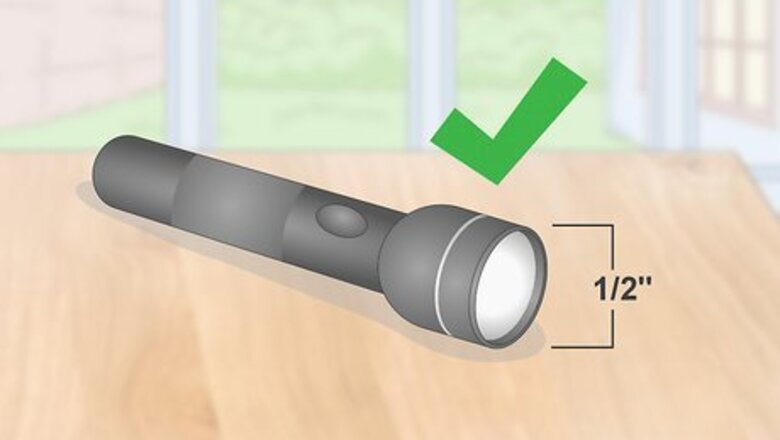
views
Candling the Eggs
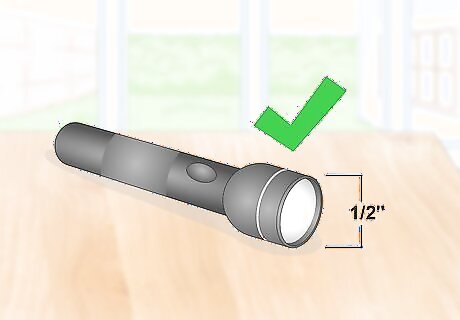
Get a ⁄2 inch (1.3 cm) diameter flashlight. The flashlight should be small enough for you to hold comfortably in your hand and be bright enough to shine into the egg. For an old school approach, you can use a candle to check the eggs. However, be careful when holding the candle, as you do not want it to become a fire hazard.

Make the room or area very dark. Turn off all the lights in the room or area so you can shine the flashlight into the egg and look at it. You can also drape the incubator with a black out curtain or a dark blanket so it is dark inside.
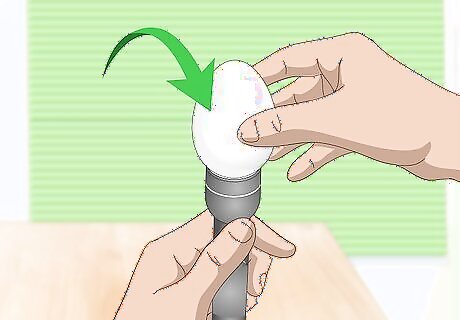
Shine the flashlight on the eggs. Hold the flashlight in one hand and the egg in the other, with your thumb resting on the back of the egg. Place the egg against the flashlight so all the light enters the egg. The flashlight should illuminate the entire egg. Make sure there are no shadows cast on the egg. You want a clear view of the inside of the egg using the light of the flashlight.

Check for veins and a reddish coloring. Look for distinct veins and a warm reddish coloring to the egg, especially on day 6 or more of incubation. This is a sign that the embryo is living and developing. Towards the end of incubation, you may also see the duck’s bill developing inside the air sac in the egg. This means the duck egg will soon hatch.
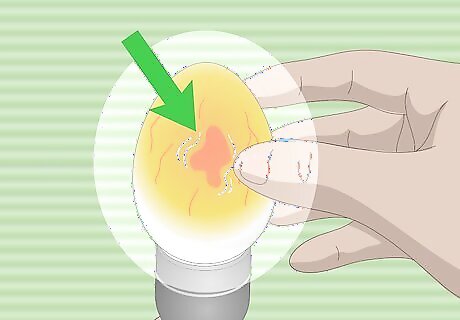
Look for movement in the egg. When you shine the flashlight on the egg, you should notice the embryo moving in the egg. It may wiggle or shake. The embryo should be stimulated to move by the bright flashlight.
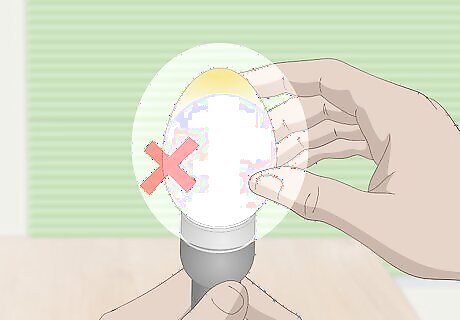
Remove any eggs that are white, with no veins or movement. If the egg does not have any distinct veins and it is white when you shine the light on it, it is likely dead. The egg may not move and you may not see anything in the egg when you examine it with the light. The duck eggs may appear dead during any stage of development, from day 1 to day 27.
Using the Float Test
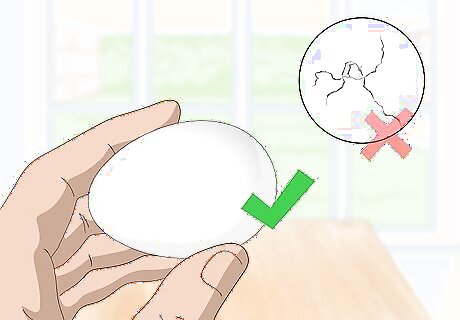
Make sure the eggs have no cracks. Before you perform the float test, confirm the eggs are free of cracks, dents, or other damage. You do not want to put cracked eggs in water, as this will drown the embryo, if it is still alive. If you know the incubation period of the eggs, you should also wait until day 24 or 25 to do the float test. This will ensure the eggs are developed enough for the test.
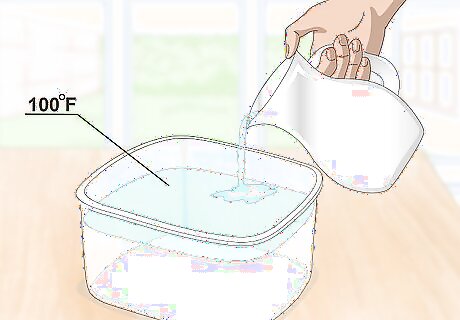
Put warm water in a clear plastic container. The water should be no hotter than 100 °F (38 °C). Pour it into a deep plastic container that you can see into. The container should be ½ to ¾ full.
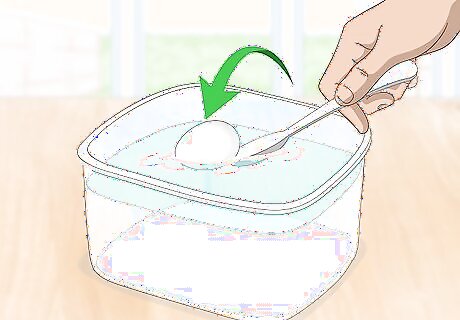
Lower the egg into the water with a spoon. Carefully place the egg in the water. Do one egg at a time.
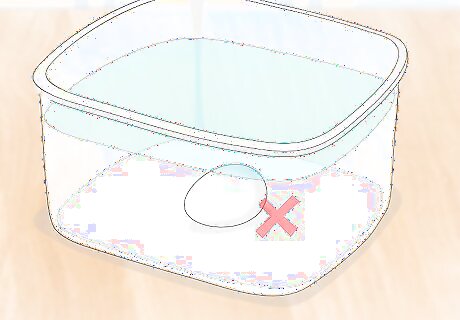
Notice if the egg sinks to the bottom. If the egg sinks to the bottom of the container in the water, it may not be alive. This is a sign that the egg has a yolk, not a developed embryo.
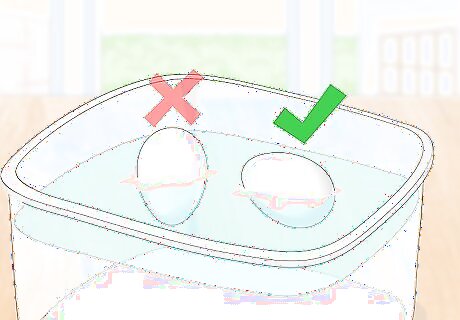
Check if the egg floats at an angle. If the egg floats with the big end above the water and the narrow end pointing downward, it may not be alive. If it floats at an angle, where the egg is almost horizontal, it may contain a live embryo. If the embryo is alive, the egg may also move around on its own in the water. If the egg floats at an angle, remove it from the water and wipe it dry. Place it in an incubator and allow it to hatch on its own.
Inspecting the Eggs

Touch the eggs to see if they feel warm. If you find duck eggs in the wild, use the back of your hand to see if the eggs are warm to the touch. The eggs may have fallen from a nearby nest and still be warm from their mother. Just because the eggs are warm does not mean they are alive. You will need to perform additional checks to confirm they are alive.
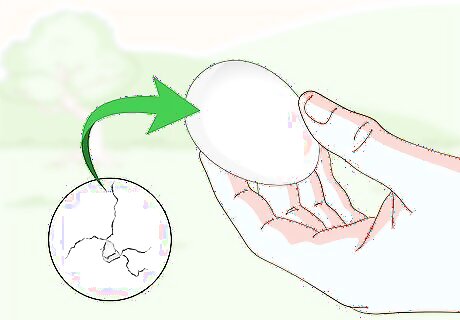
Make sure there are no cracks or flaws on the eggs. Look at the shells of the eggs. Check there there are no hairline fractures, dents, or cracks in the eggs. If so, the eggs may be damaged and no longer alive.
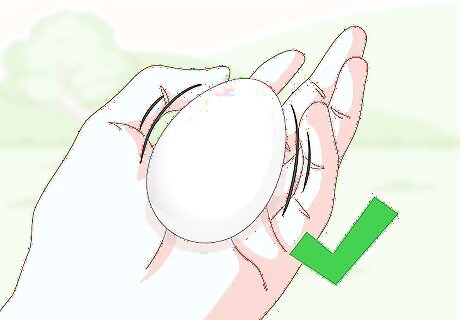
Check to see if the eggs move. Place the egg in your hand and notice if it shifts or tilts around. This may be a sign that the embryo is still alive in the egg. Duck eggs that are far along in the incubation process and still viable will shake or shift slightly on their own.
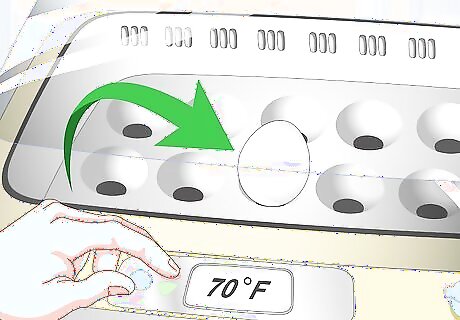
Put the eggs in an incubator. If you believe the abandoned duck eggs are alive, rinse them off in lukewarm water so they are clean and place them in an incubator. You can buy incubators for duck eggs online or at your nearest pet store. Make sure the incubator stays at 99 to 101 °F (37 to 38 °C). You will also need to turn the eggs once a day so they stay warm. Candle the eggs with a flashlight as they incubate to confirm they are developing well. Depending on how far along the duck eggs already are, it will take 27 to 28 days for the eggs to hatch in the incubator.



















Comments
0 comment